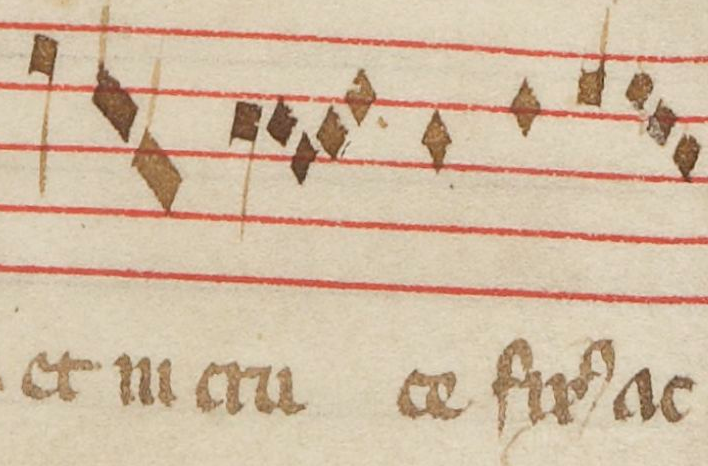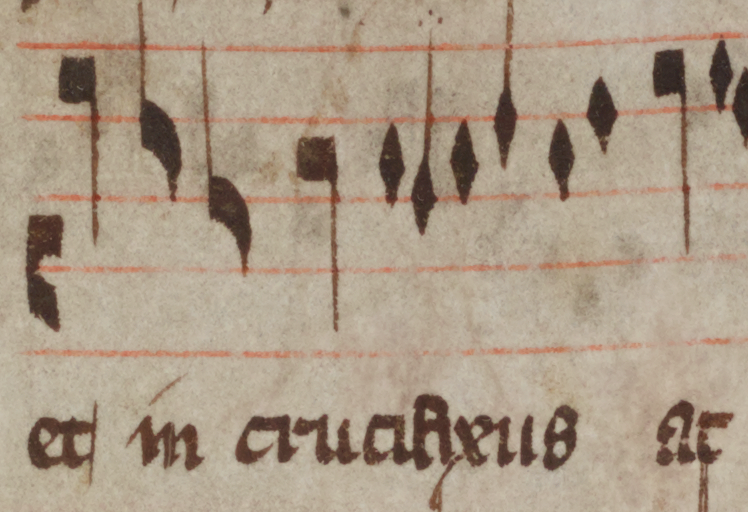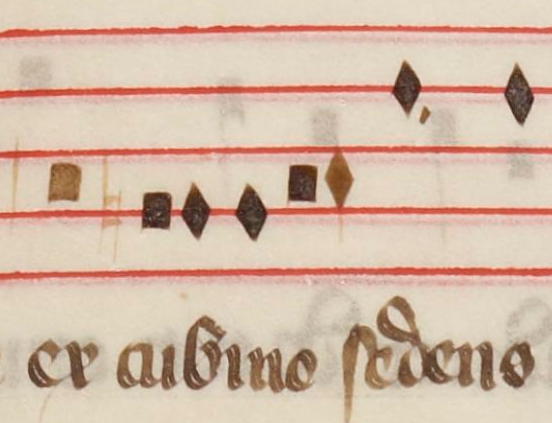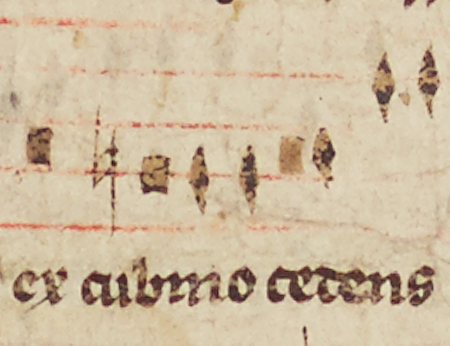For a non-mimetic fidelity

The transcription of a medieval manuscript is inconceivable without a certain “fidelity”… Certainly, but fidelity to what? Should a “faithful” transcriber today be obliged to reproduce in every detail the spatial arrangement of the source he is working on? Once considered, such a program now seems problematic.
Our transcriptions are computer files in text form that need to be writable by humans and readable by machines. If we wanted to mimic the two-dimensional space of the folio as accurately as possible, we would have to overload its transcription with a myriad of annotations about the specific shape of the graphic elements, their size, their spacing, their absolute or relative position, and so on. We would exhaust ourselves with mimicry, drowning the relevant information in a descriptive stream that is often meaningless. In the end, despite all our efforts, we would have no chance of even approaching the precision of the smallest digital photograph.
To avoid this exhaustion, we must consider the manuscript not as an object detached from the rest of the world, to be reproduced as such, but as the materialization of a scribe’s intentions. Rather than imitating graphic figures, then, the fundamental task of the transcriber will be to interpret them as sequences of signs drawn from a pre-established repertoire that we assume was present in the mind of the medieval copyist.
The way we deal with the syllabification of literary texts is a good example of this non-mimetic fidelity. As is well known, in the Middle Ages the copying of a musical manuscript followed a well-defined sequence: first the literary text was written under an empty staff, then the music was added above the text. This forced the person copying the text to leave enough horizontal space for the music to be comfortably noted, and thus to leave large gaps between certain syllables. This is clearly seen in this virelai by Guillaume de Machaut (F-Pn 9221, f° 160 v°), where the music was never notated, but where the scribe had to write, for example, “a mour” and “lon guement” in the second line of the text:

Of course, no one should conclude that this scribe wrote “amour” in two words: it is obvious that the prospect of adding music led him to separate the syllables. If we had to edit this piece, we would transcribe “amour” and “longuement” without hesitation, leaving it to the algorithms to add any hyphens dictated by the spatial constraints of our edition. The same would be true when the scribe, having reached the far right, returns to the line between two syllables belonging to the same word.
But we also find cases where it is interesting to reproduce an unusual spacing because it tells us something about the mental processes at work in the copyist:


Above, an excerpt from the motet Adesto sancta trinitas (voice of triplum), in two manuscripts: on the left Le Roman de Fauvel and on the right the rotulus of Brussels. If Fauvel’s scribe left a large space between the two syllables of “cruce”, he probably left room for the melisma on “cru”. The text then unfolds in a rather regular way: a small, usual space after the word “cruce”, abbreviation of the second syllable of “fixus”, which allows the music to follow without interruption on the following syllable. One will therefore transcribe without much hesitation “et in cruce fixus”, and fixed on the cross. The Brussels scribe, on the other hand, clearly writes “et in crucifixus”. No doubt influenced by the juxtaposition of the two words “cruce” and “fixus”, he thought he was reading a form of the verb “crucifigere”, crucify. As the four syllables appear welded together, the melisma is transferred from “cru” to “ci”, and the two notes corresponding to the last syllables of the word are shifted slightly to the right. Even if “et in crucifixus”, literally and in crucified, does not mean much and should not be retained for the critical edition, it seems important to us to respect both the spelling and the syllabic division practiced by the Brussels scribe in our diplomatic transcription of this manuscript.


In this other excerpt, from the motet In nova fert (voice of triplum), the two scribes (Fauvel on the left and Picardie 67 on the right) left a space between “ex” and “cubino”. Since there is nothing in the music that could represent an unavoidable spatial constraint, it is reasonable to assume that the two scribes intended to write down two words, and our two diplomatic transcriptions must therefore preserve that space. However, neither “cubinus” nor “cubinum” appear in Latin dictionaries, but “excubinus” is found as a primitive form of “esquilinus”, Mount Esquilinus, i.e. one of the hills of Rome, which, according to Dionysius of Halicarnassus (Roman Antiquities), was so called because Romulus had established his guard there. On this basis we can translate “excubino sedens officio” with “standing guard”. However, it is assumed that this term was unknown to the scribes and that they used the preposition “ex”, even if it meant copying the ablative of a non-existent word…